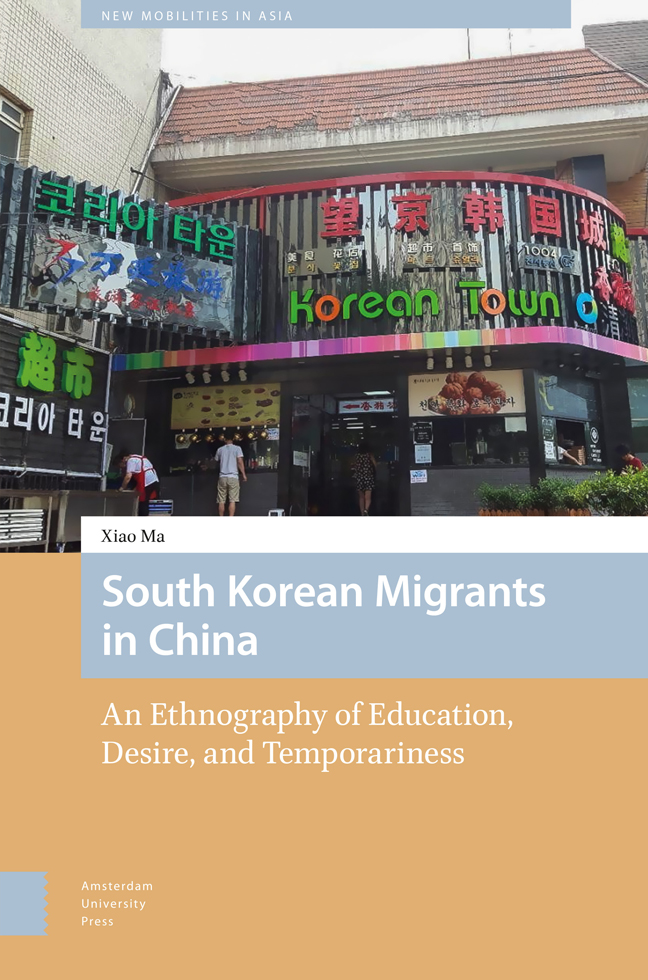Book contents
- Frontmatter
- Contents
- List of Illustrations
- Acknowledgements
- 1 Introduction
- 2 Temporary Residents’ Community in Beijing
- 3 The Internationalised Education of China and the Globalised Education of South Korea
- 4 Educational Desire in School Choice: Identities of Home, Destination and the World
- 5 Desirable Homecoming: The Pursuit of Tertiary Education in the Context of Temporary Migration Regimes
- 6 Internationalisation in Chinese Education: The Quest for Entry to a Top Chinese University
- 7 Conclusion
- Index
3 - The Internationalised Education of China and the Globalised Education of South Korea
Published online by Cambridge University Press: 26 March 2024
- Frontmatter
- Contents
- List of Illustrations
- Acknowledgements
- 1 Introduction
- 2 Temporary Residents’ Community in Beijing
- 3 The Internationalised Education of China and the Globalised Education of South Korea
- 4 Educational Desire in School Choice: Identities of Home, Destination and the World
- 5 Desirable Homecoming: The Pursuit of Tertiary Education in the Context of Temporary Migration Regimes
- 6 Internationalisation in Chinese Education: The Quest for Entry to a Top Chinese University
- 7 Conclusion
- Index
Summary
Abstract
This chapter explores the transnational educational circumstances of Korean migrants in China and the Chinese and Korean states’ surrounding discourses and practices. The Chinese education system has become increasingly internationalised in recent years. This can be observed in the growing number of international schools and the internationalisation of Chinese schools/universities which, paradoxically, incorporate and segregate foreign students. Meanwhile, the prevalence of overseas Korean education providers in China reflects the Korean state’s ambition to engage more with overseas Korean nationals as well as the demand and desires of Korean migrants, who form an integral part of the ‘education exodus’ from Korea to the rest of the world. Data in this chapter were collected from government documents, news reports, interviews and participant observation.
Keywords: Internationalisation, Chinese education, globalisation, Korean education
International Schools in China: Beijing as a Hub
The development of international schools, as we know them today, began in the mid-1920s. These institutions primarily catered to Western expatriate families who wished their children to be educated in a system compatible, academically and linguistically, with the ones in their home country (Hayden and Thompson 2008). The first two international schools – located in Switzerland and Japan – were both established in 1924, and provided their curricula in English and French (Hayden and Thompson 2008). In China, international schools were not officially permitted to operate until the ‘opening-up period’ in the late 1970s. Prior to this, most Western expatriates in China sent their offspring to boarding school in their home country, although younger children often attended local nurseries and schools (Hooper 2016, 34 and 85–86).
The first international school in China – the International School of Beijing (ISB) – was founded by the United States Liaison Office in Beijing during the early 1970s, prior to the normalisation of Sino-American relations (ISB n.d.). The school – officially founded in 1980 – was led by the US Embassy and merged academic initiatives and classes run by the British, Australian, Canadian and New Zealand embassies (ISB n.d.). The school provided a pre-university education for the children of Beijing-based diplomats and embassy staff; the number of which had soared after China established diplomatic relations with several Western countries in the late 1970s. Officially registered as a ‘school for diplomatic children,’ it was eventually granted permission to accept all foreign students by the Beijing Municipal Education Bureau in 2002 (ISB n.d.).
- Type
- Chapter
- Information
- South Korean Migrants in ChinaAn Ethnography of Education, Desire, and Temporariness, pp. 75 - 98Publisher: Amsterdam University PressPrint publication year: 2024

